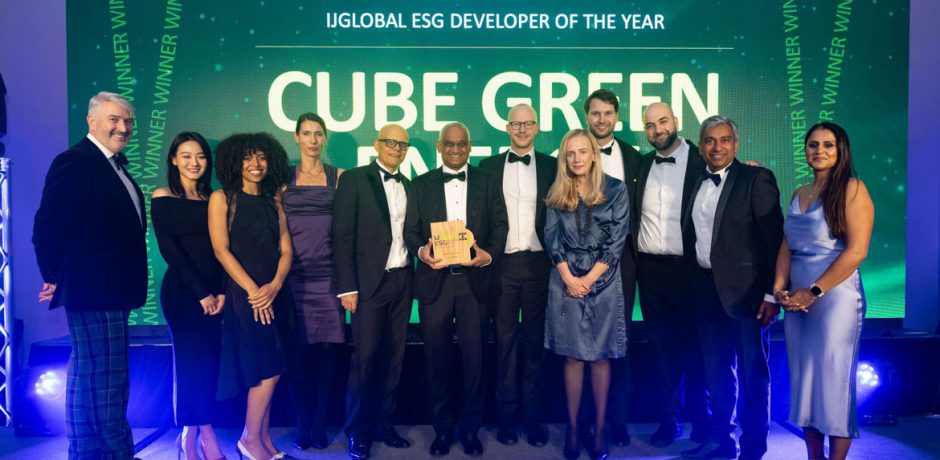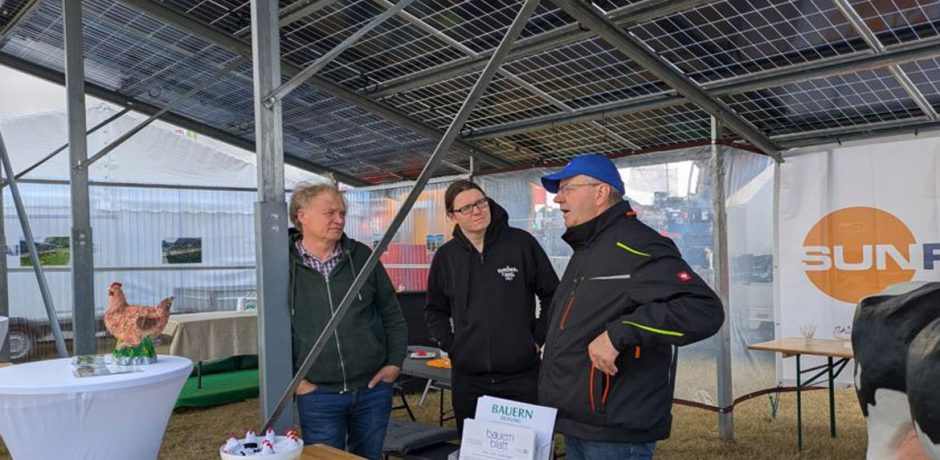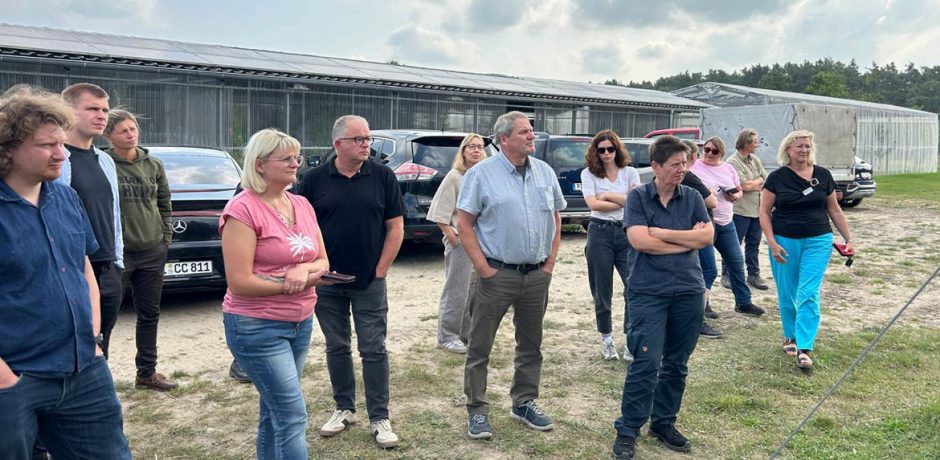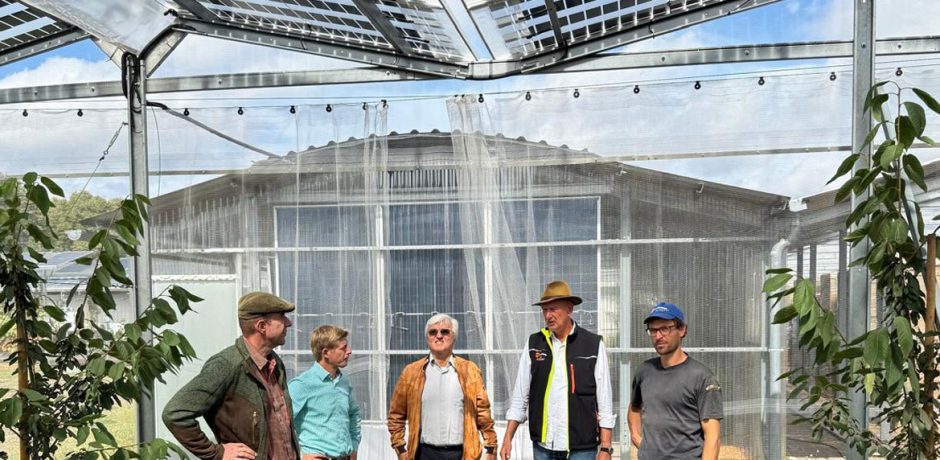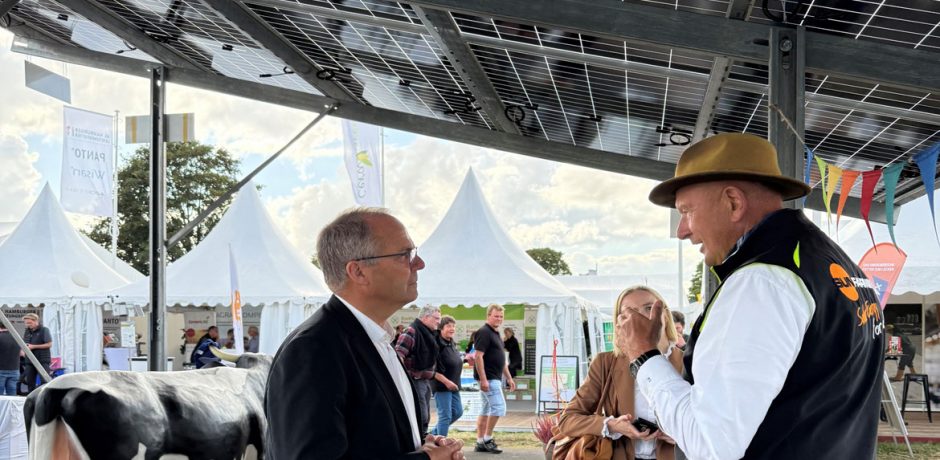News
Proud moment for Cube Green Energy and SUNfarming!
We’re thrilled to share that Cube Green Energy has been honoured with two awards at the IJGlobal ESG Awards 2025 last week:
• Developer of the Year
• Environment Award
• Environment Award
These recognitions are a testament to our commitment to advancing Europe’s clean energy transition through responsible development and sustainable innovation.
Our Sustainability strategy delivers tangible real-world impact - operating in advanced economies reliant on fossil fuel imports with high competing demand for land use, our wind repowering, Agri-PV (SUNfarming) and BESS solutions are critical to maximising land use efficiency while strengthening the long-term energy, food and national security of our core markets, Germany and France.
We also extend our appreciation to our investor, I Squared Capital, for their continued trust and collaboration in our shared vision of a sustainable energy future and to Ulrica Svensnson for her ongoing guidance in shaping our Sustainability strategy and pushing us to always do better.
Congratulations to all the participants for their contributions towards Sustainability!
Successful trade fair appearance by SUNfarming at MeLa 2025
From September 11 to 14, SUNfarming once again presented innovative agri-photovoltaic solutions for agriculture and decentralized energy supply at MeLa 2025 in Mühlengeez.
With a 1:1 agri-solar system (17 x 6 m) in the outdoor area, we were able to demonstrate live how agriculture and energy production can be sustainably combined through intelligent dual use. Numerous visitors came to find out about our concepts for animal husbandry, special crops, and fruit and vegetable cultivation.
The response speaks for itself:
*Around 67,000 visitors in total at MeLa 2025
*Hundreds of technical discussions with farmers, interested parties, and decision-makers
*Great interest in visiting our research and innovation center in Rathenow
*Special appreciation through the visit of Mr. Johann-Georg Jäger, Chairman of the Mecklenburg-Western Pomerania Renewable Energy Association (LEE MV e.V.)
Our agri-PV consultants held numerous discussions and were able to make many new contacts. A particular focus was on the launch of our first large-sca
As part of the Cube Green Energy Group, we will be able to offer our customers even more comprehensive solutions in the future – from agri-PV and photovoltaics to wind energy.
Conclusion
MeLa 2025 was a complete success for SUNfarming. The high level of interest confirms our role as a leading provider of agri-photovoltaic solutions. Together with farmers, partners, and political actors, we are shaping the agriculture of tomorrow—sustainable, innovative, and economical.
We would like to thank everyone who visited us at the trade fair and look forward to the next steps in our joint projects!
Livestock Farming under Agri-PV: Specialist Event at the SUNfarming Research & Training Center
Recently, the SUNfarming Food & Energy Research & Training Center in Rathenow hosted a specialist event on the topic of livestock farming under agri-photovoltaics (Agri-PV).
The event was organised in cooperation with the State Office for Occupational Safety, Consumer Protection and Health (LAVG Brandenburg), represented by the Animal Welfare Advisory Service. Thanks to the funding of the Focus Animal Welfare Network by the Federal Ministry of Agriculture, Food and Community, participation was free of charge.
The event brought together farmers with animal husbandry, representatives of authorities and scientific institutions, as well as experts from consulting, planning, and the solar industry.
Program Highlights
The day began with a get-together and welcome address by Dr. Claudia Possardt (TSBD) and Angelique Buchwald (Netzwerk Fokus Tierwohl, LAVG), followed by a guided tour of the Agri-PV systems on site, which are operated in combination with livestock farming.
The technical program featured a series of expert lectures:
• Luca Unger (M. Münch Elektrotechnik GmbH & Co. KG) shared insights on the behaviour of farm animals in Agri-PV systems.
• Edith Seemann (BRM e.V.) explained the current funding opportunities for Agri-PV in livestock farming.
• Carl Pump (University of Greifswald / Fraunhofer ISE) presented technical solutions for implementing Agri-PV in free-range farming.
• Lawyer Margarete von Oppen (orka Partnerschaft mbB) gave an overview of legal aspects regarding the building application process for Agri-PV on run-off areas.
• Several farmers shared their own practical experiences, providing valuable insights from the field.
Key Takeaways
The event demonstrated that combining livestock farming with Agri-PV creates multiple benefits:
• Improved animal welfare through protection from heat, heavy rain, and frost
• Increased profitability of agricultural land by enabling dual use—energy generation and livestock farming
• A valuable contribution to climate protection and the energy transition
In the concluding discussion, participants emphasized that Agri-PV in livestock farming is not only a technological advancement but also a socially relevant innovation. Many called for simplified approval and funding structures to unlock the full potential of this sustainable solution.
Agri-Solar Meets Medicinal Herbs: First Expert Meeting at the SUNfarming Innovation Center
Rathenow, Germany — The SUNfarming Innovation Center recently hosted its first expert meeting on medicinal herbs, welcoming selected farmers, technicians, and agricultural engineers to explore new opportunities at the intersection of Agri-solar and high-value crops.
Medicinal herbs such as sage, nasturtium, and chamomile are currently being cultivated under solar modules at the Innovation Center. These crops are considered especially attractive in the premium market segment, offering agri-solar farmers new economic perspectives. The first trial results are expected as early as next year.
In parallel, we developed Agri-PV greenhouse systems tailored for industrial customers, particularly in the data center sector. These closed systems use industrial waste heat to create optimal growing conditions for medicinal herbs, ensuring both efficiency and sustainability.
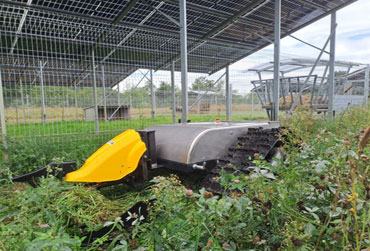
With these innovative multi-use concepts, we go far beyond renewable electricity generation with battery storage. We deliver legal certainty for the use of industrial waste heat and open new economic opportunities for both agriculture and industry.
As a leading provider of Agri-solar solutions, we continue to adapt to market needs — combining energy, agriculture, and industry to create sustainable solutions for the future.
SUNfarming at Norla 2025 – Agri-Solar in Focus
From 4–7 September 2025, SUNfarming was once again present at Norla in Rendsburg with a large, representative Agri-Solar exhibition stand that drew strong interest from the agricultural community.
The advantages of dual land use — generating clean energy while maintaining agricultural production on the same land — resonated particularly well with farmers. “With us, farmers remain farmers on their own land,” said Stephan Franke, Head of SUNfarming Project Development North.
Political dialogue on Agri-PV for peatlands
A special highlight was the visit of Agriculture Minister Werner Schwarz, who was welcomed by SUNfarming founder Peter Schrum. The conversations focused on simplifying and enabling approvals for Agri-Solar on peatlands.
Peter Schrum, Founder of SUNfarming, emphasized: “Currently, many peatlands in Schleswig-Holstein that are mown several times a year are not eligible for Agri-Solar. This makes little sense from either a nature conservation or climate protection perspective. Instead of using valuable arable land, we should make peatlands sustainably usable through Agri-PV combined with extensive cattle grazing beneath the modules.”
This position reflects long-standing requests from farmers and highlights a practical path to combine nature conservation with the energy transition.
Conclusion
Norla 2025 underlined that Agri-Solar is a forward-looking concept for agriculture and the energy transition — delivering clear benefits for farmers, policymakers and society alike.
We are honored to be nominated at the IJGlobal ESG Awards 2025
Cube Green Energy has been shortlisted in six categories for this year’s IJGlobal ESG Awards – a proud moment for our entire team and a reflection of our ongoing commitment to a responsible and sustainable energy transition.
ESG stands for Environmental, Social, and Governance.
Environmental: CO₂ reduction, energy efficiency, renewable energy.
Social: fair working conditions, safety, diversity.
Governance: transparency, compliance, ethics.
At Cube Green Energy, ESG is at the heart of everything we do. Since our integration with SUNfarming in January 2025, we have been combining our strengths to advance innovative onshore wind and Agri-PV solutions. SUNfarming brings decades of experience in the development and implementation of photovoltaic and Agri-PV projects – expertise that enables us to make even more efficient use of Europe’s limited land resources.
By repowering ageing wind farms and enabling dual land use through Agri-PV, we not only increase the production of clean energy but also strengthen local agriculture while improving food and energy security.
These nominations recognise our joint impact in environmental protection, social responsibility and exemplary corporate governance – all central to our mission of building a cleaner and smarter energy future.
The awards ceremony will take place in early October, and we look forward to celebrating alongside other changemakers from across the industry.
Congratulations to all other nominated organisations – and a big thank you to IJGlobal for this recognition!
By loading the map, you accept Google's privacy policy.
Learn more
